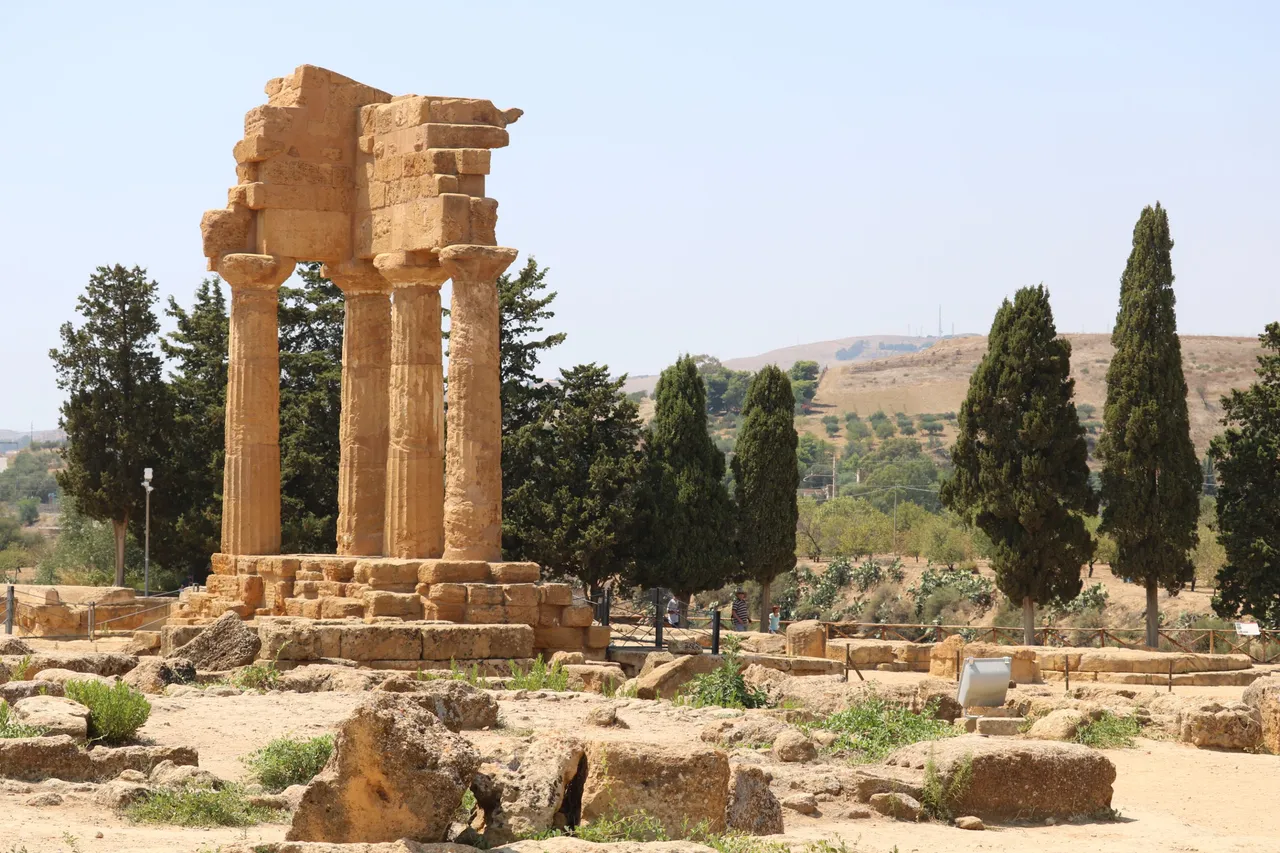
Ciao, people of HIVE!
With this article, we come back to my travel across Sicily.
Today, I want to focus on the Valley of the Temples, which, despite its tourist appeal, is also one of the places on the island to which I feel the most emotionally connected. This connection comes from my passion for ancient history and a wonderful trip I took here with my family — my mom, dad, and sister— many years ago. It was 2008, and as a teenager, restless and curious, I had a deep thirst for places like this.
Returning in 2018 was fascinating. I didn't notice many changes, not even in how the site is managed, and certainly not in the temples or the necropolises. They have belonged to this coast for 2,500 years, and for them, ten years are just a fleeting moment. Who knows how much longer they will stand there, silent witnesses to an era that no longer exists, while we mortals slowly fade away.
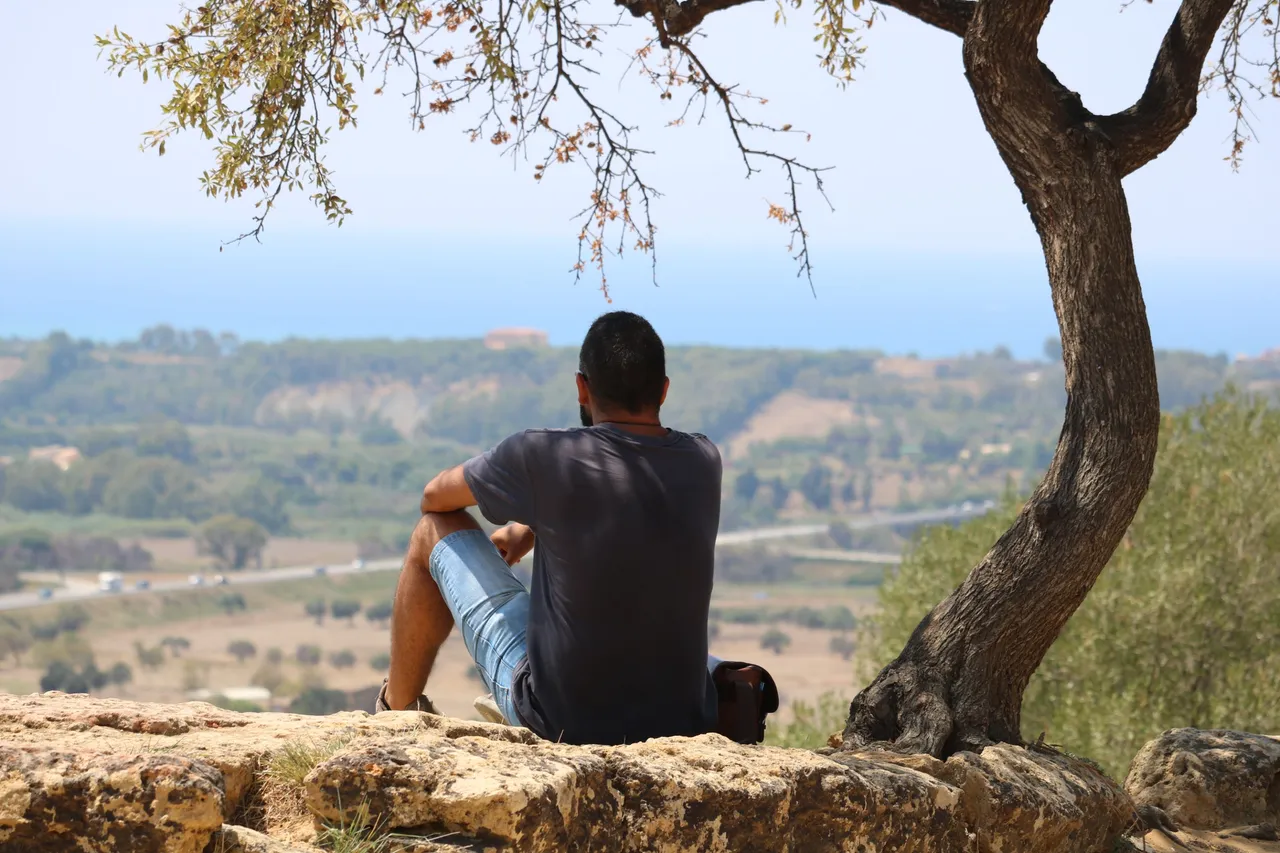
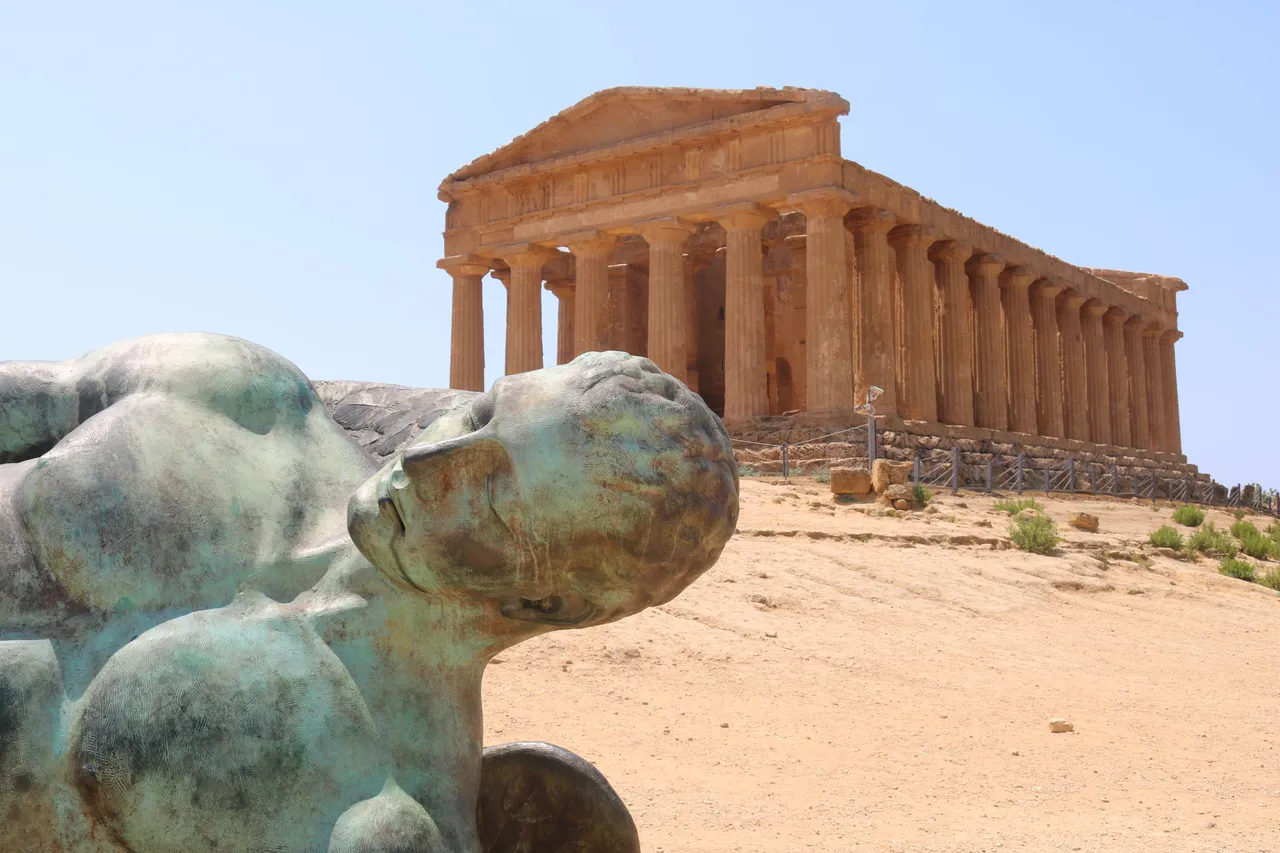
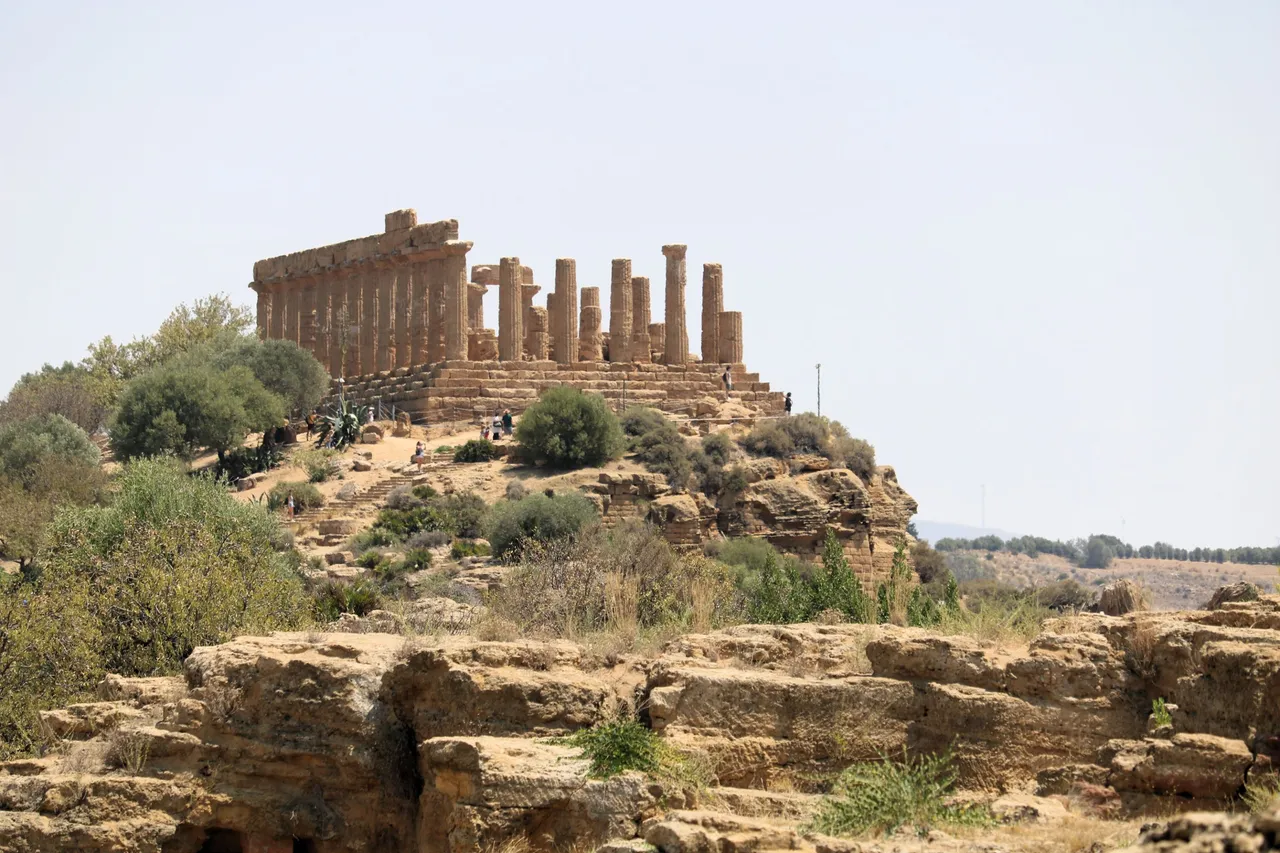
The Valley of the Temples in Agrigento is one of the most important archaeological sites in Sicily. Founded in 580 BC by Greeks from Crete and Rhodes, the colony was called Akragas and became one of the major centers of the Mediterranean world. The temples of the Valley were built during Akragas's golden age, between the 5th and 4th centuries BC; at the time, it was a powerful city, boasting 300,000 inhabitants and an army capable of facing both Carthage and rival Greek colonies of Sicily.
The most famous philosopher of Akragas, Empedocle, wrote at the time: "The opulence and splendor of the city are such that the Akragantines build houses and temples as if they were never going to die, and they eat as if they were going to die tomorrow".
However, in 406 BC, Akragas was defeated by the Carthaginians and almost completely destroyed. Two hundred years later, with the Roman conquest of Sicily, it became Agrigentum — a phonetic corruption of the Greek Akragantos. Later, it was destroyed by the Arabs and rebuilt by the Normans as Girgenti, which, interestingly, is still the name of Agrigento in Sicilian dialect.
After the abandonment of the city of Akragas, the Valley of the Temples became a necropolis and later a site of Christian worship. Their beauty was recognized and respected by all subsequent occupiers, including the Arabs and Normans. However, it wasn't until the 18th century that the first major restoration work on the temples took place.
In 1997, the Valley of the Temples became a UNESCO World Heritage site. Additionally, it is the largest archaeological park in Europe and the entire Mediterranean, covering 1,300 hectares.
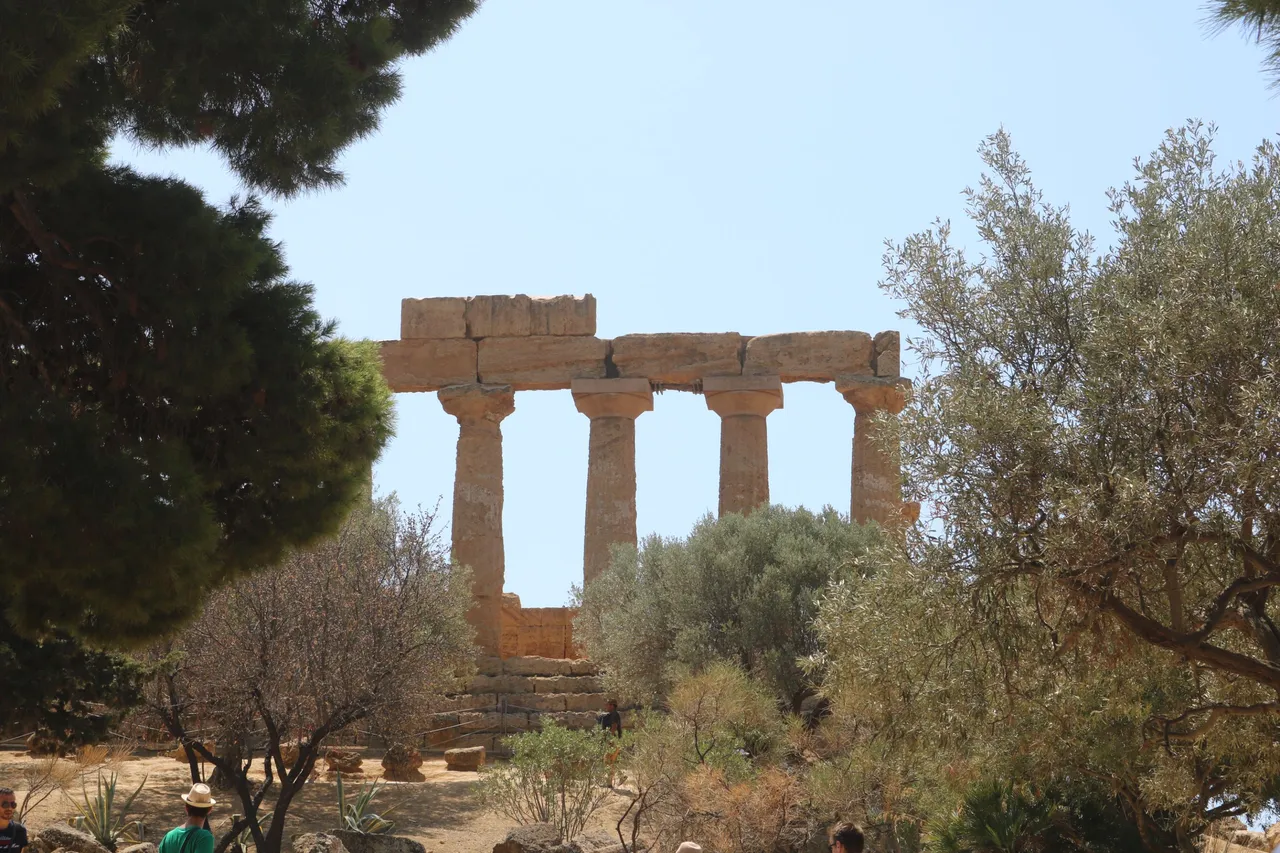
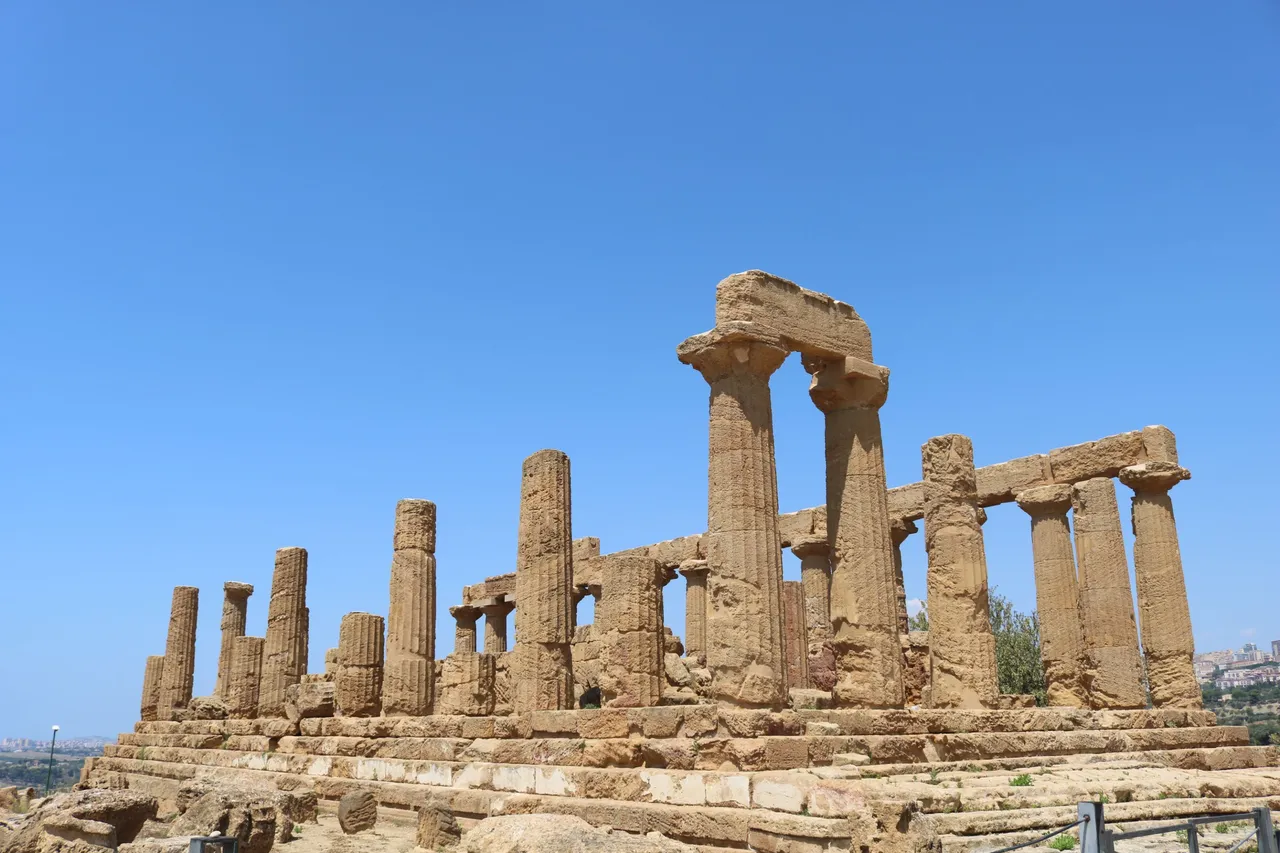
Temple of Athena. It is also referred to as the Temple of Hera, as for a long time it was believed to be dedicated to the wife of Zeus, the queen of Olympus.
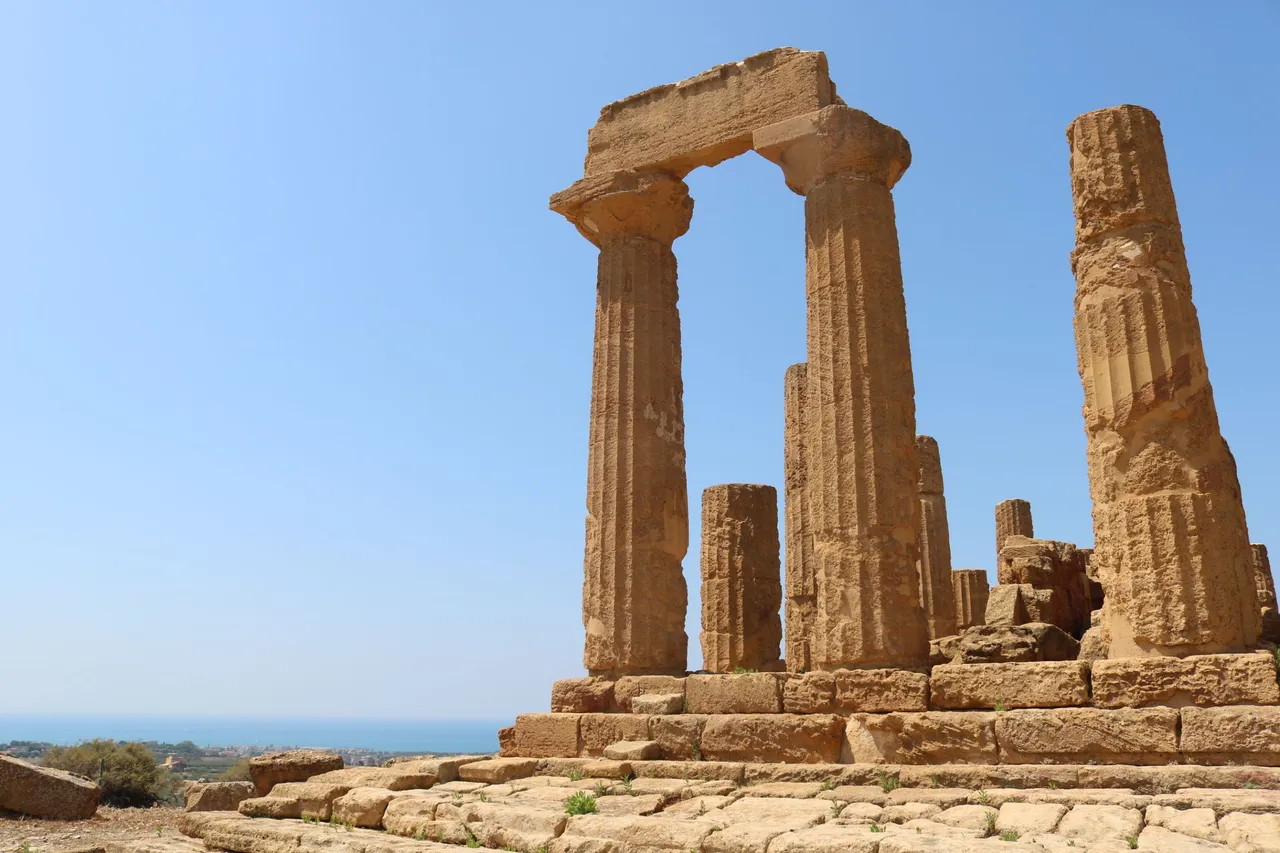
The city of Akragas enjoyed an absolutely enviable position, high above sea level, right across from Tunisia and the city of Carthage.
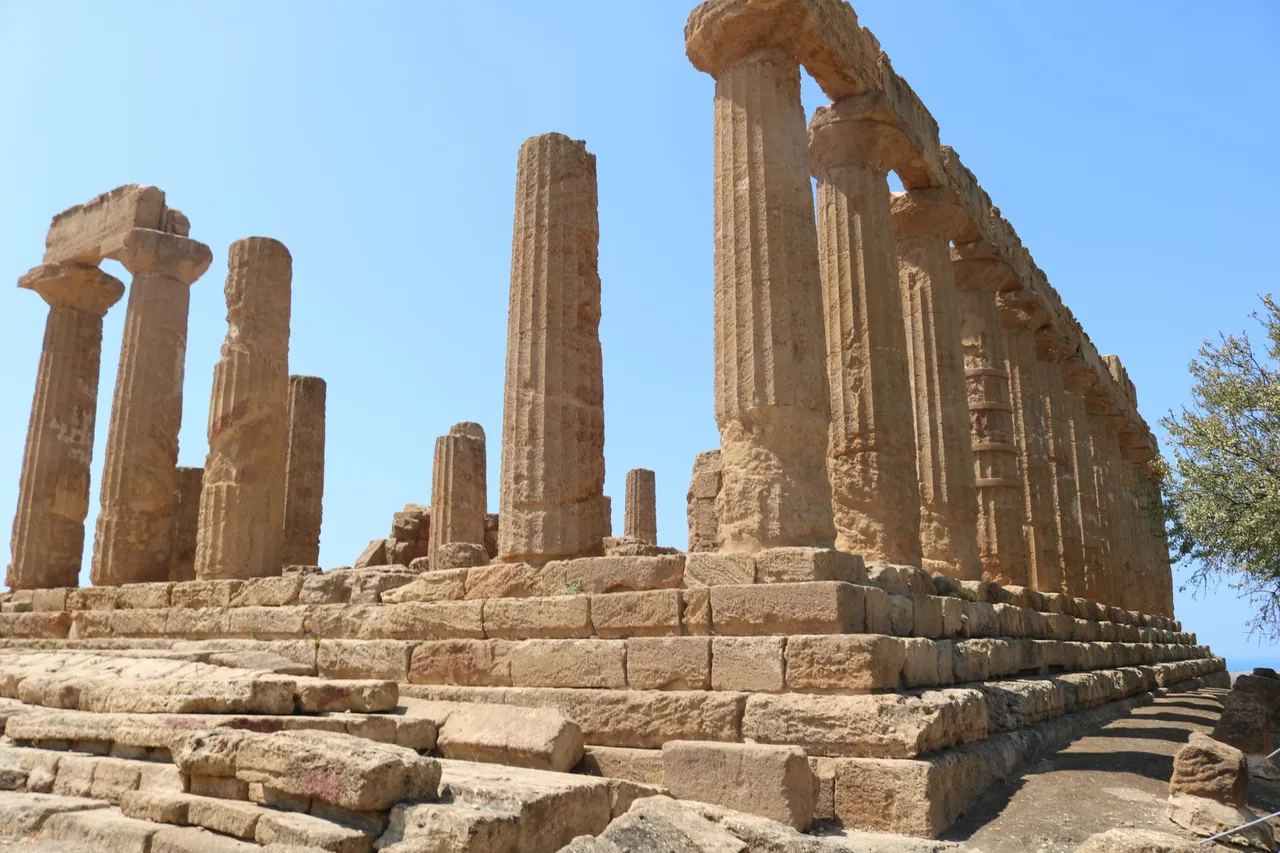
This temple is so large that I had difficulty photographing it – partly because I was determined to take pictures without any tourists in the frame.

The city you see in the background on the right is Agrigento, the modern city, not far from the Valley of the Temples.
The location of the Valley is also one of the things I love the most. If you know me a bit by now, after all this time here on HIVE, you know very well that I have an infinite love for sea landscapes.
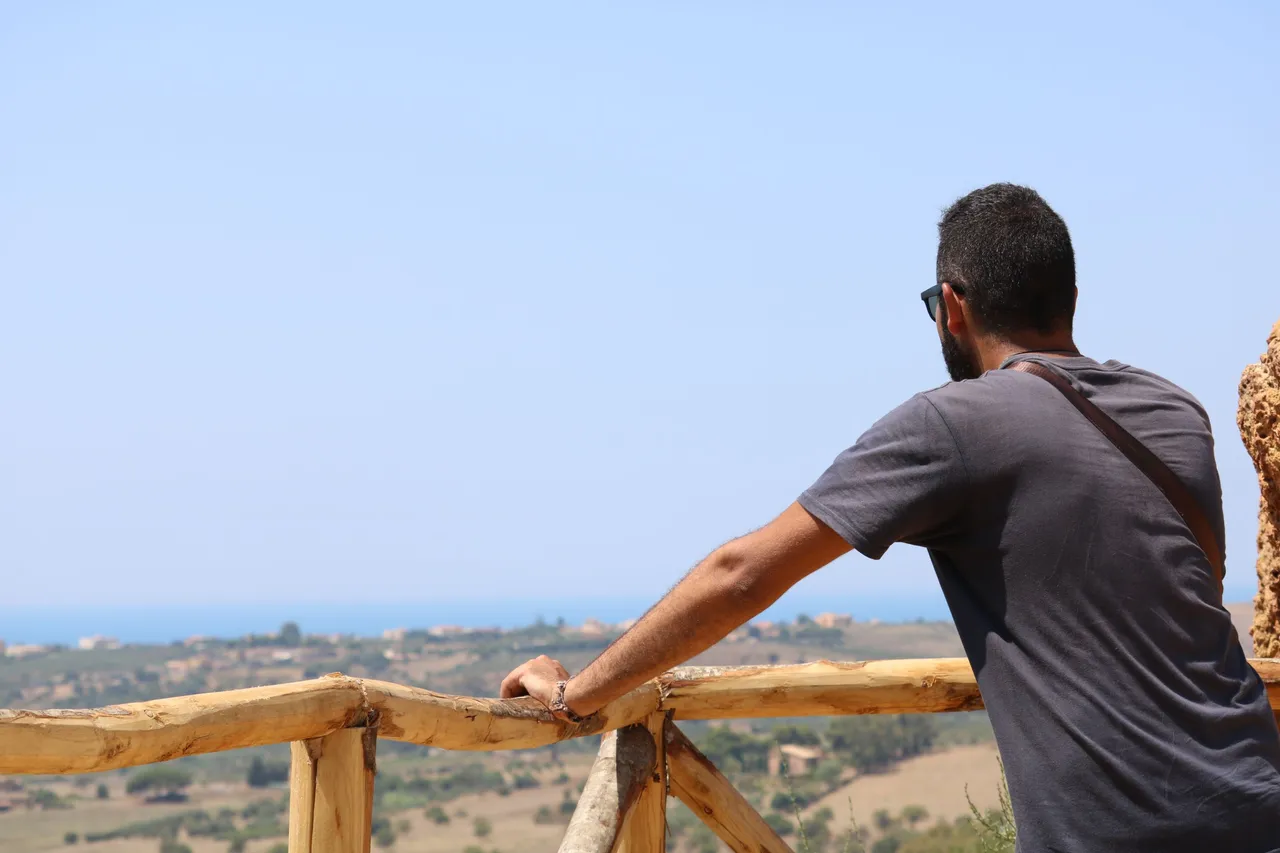
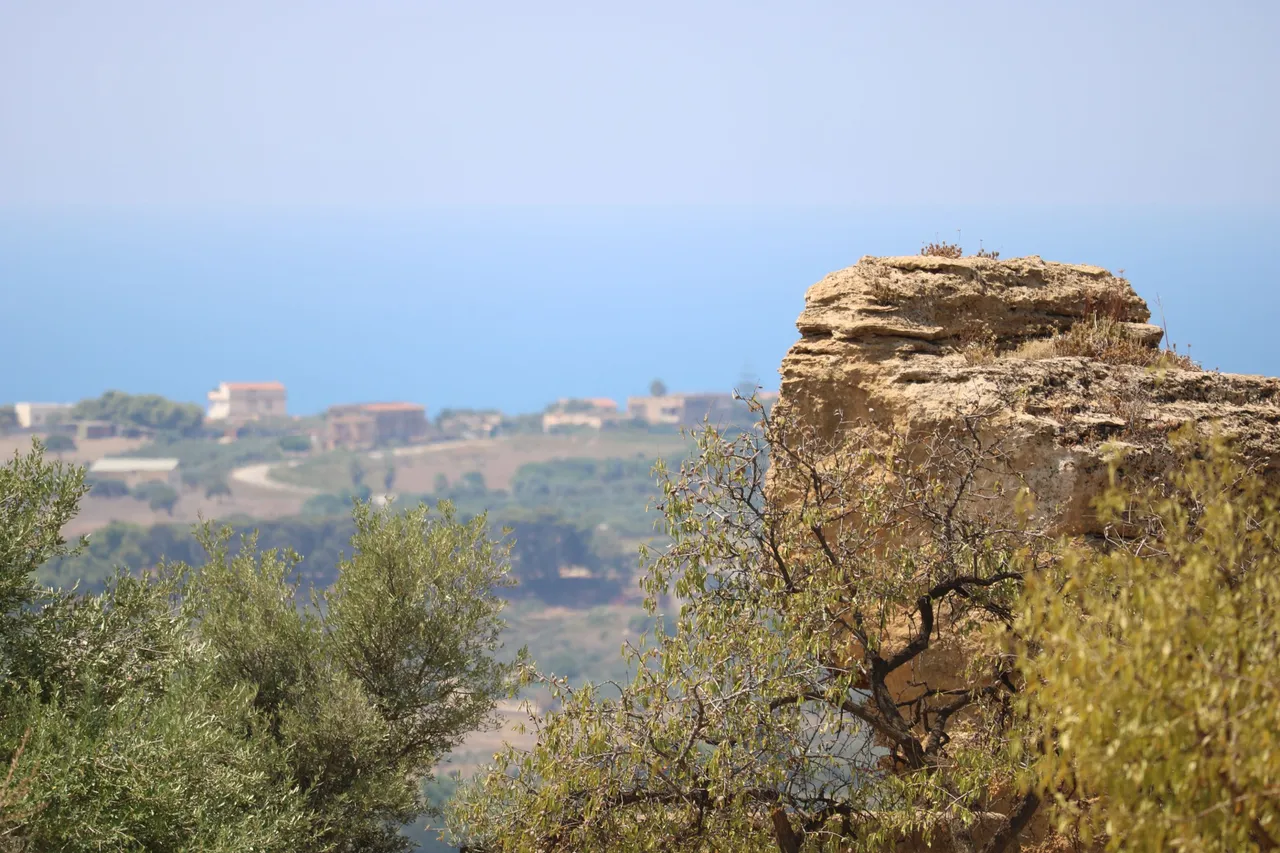
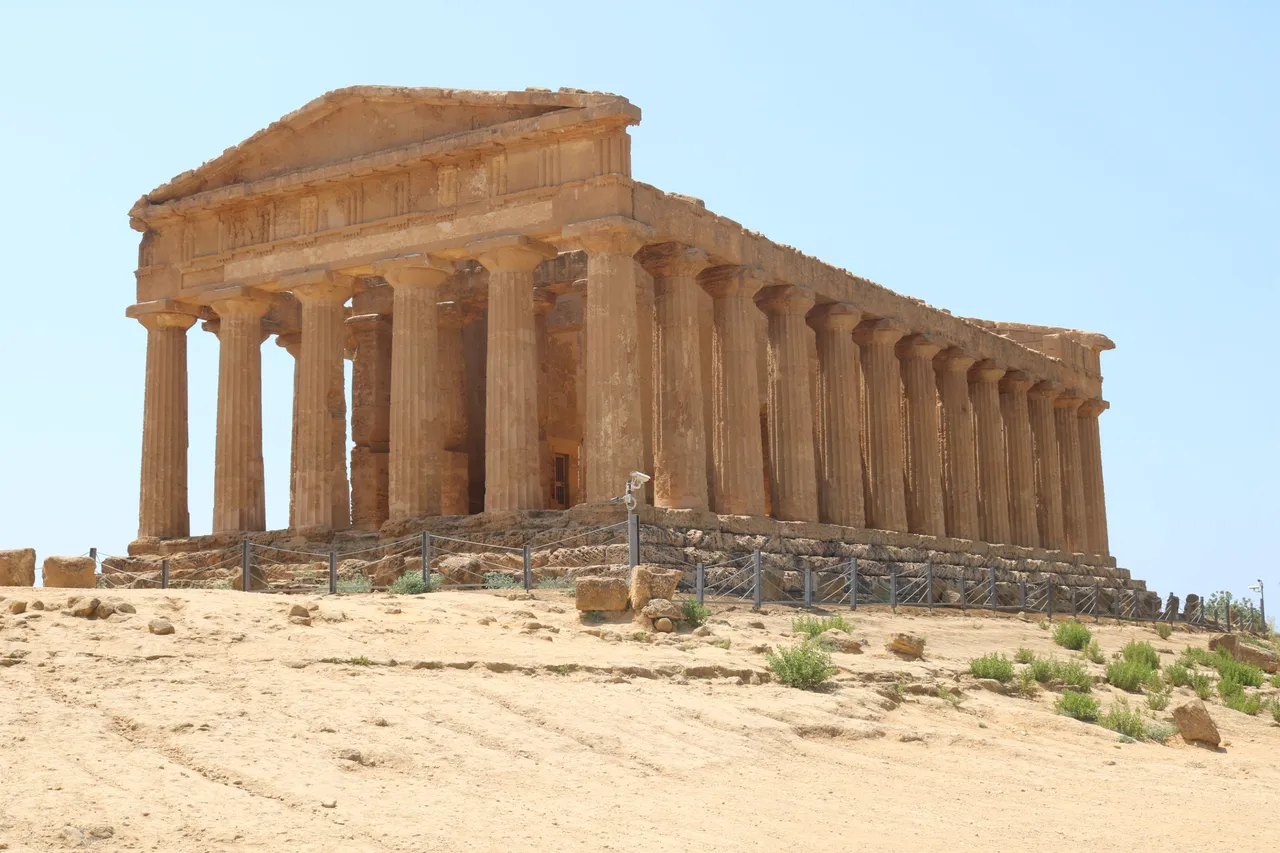
And so, walking along, we reached the Temple of Concordia, which is the most well-preserved temple in the Valley. In fact, alongside the Parthenon in Athens, it is considered the best-preserved Doric temple in the world.
Unfortunately, it’s not possible to enter, but just seeing it from the outside is incredible — an experience you must have if you’ve never had the chance to admire such an ancient and impressive building.
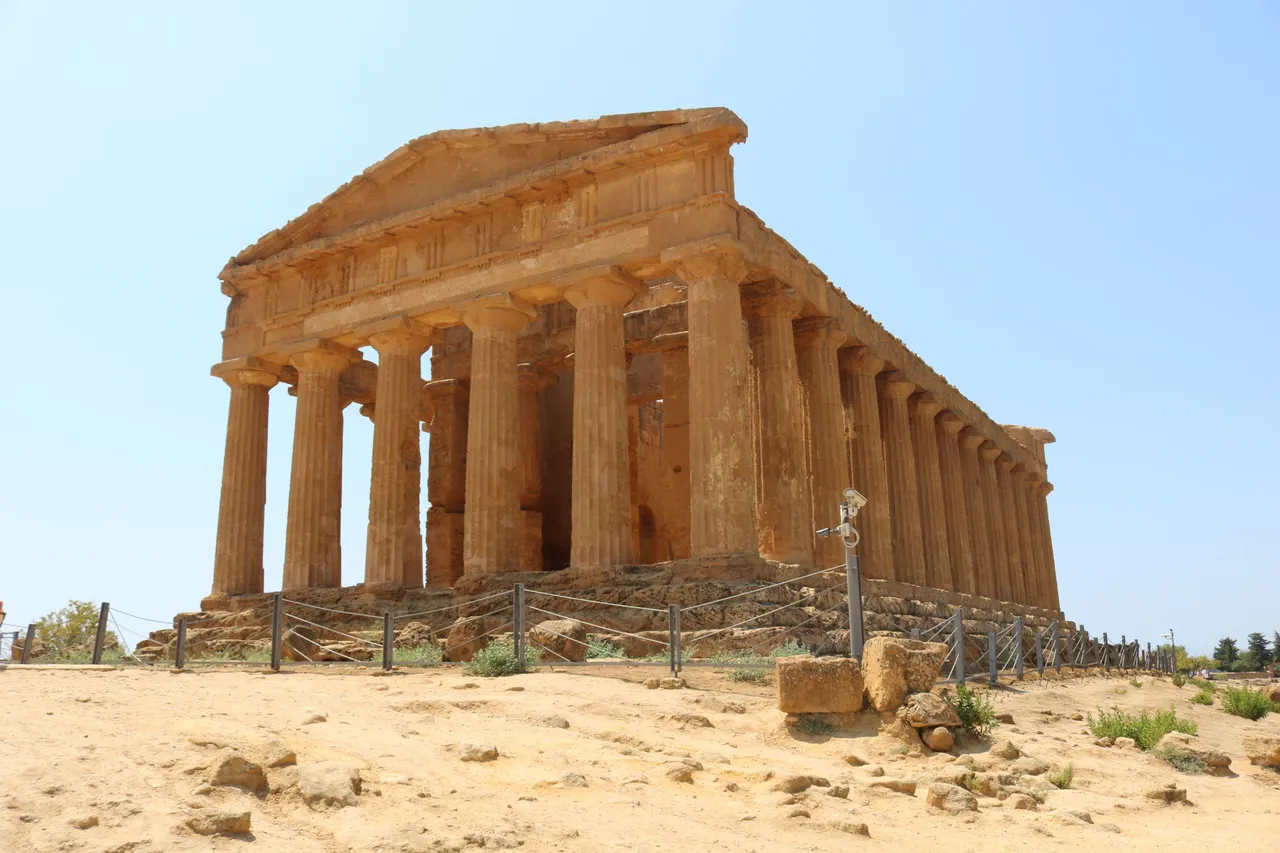
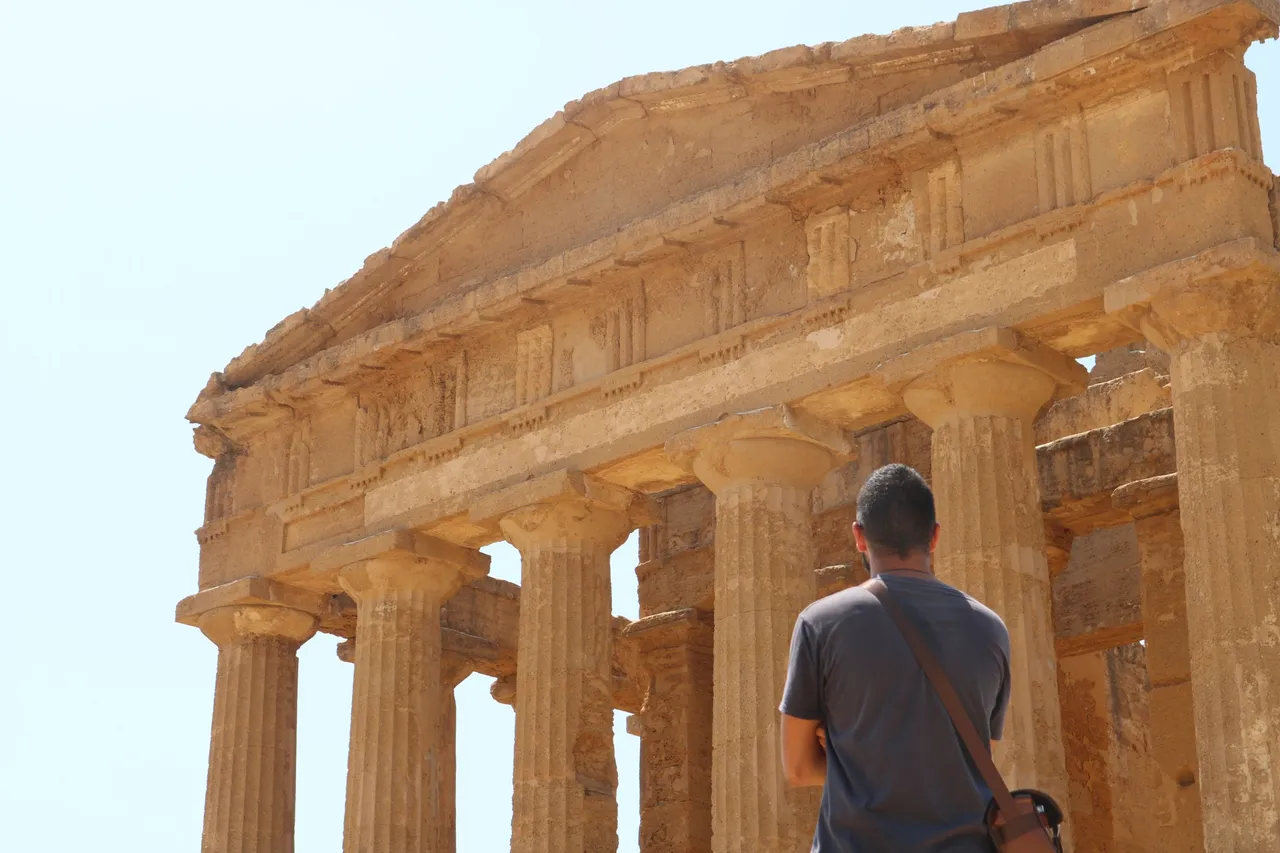
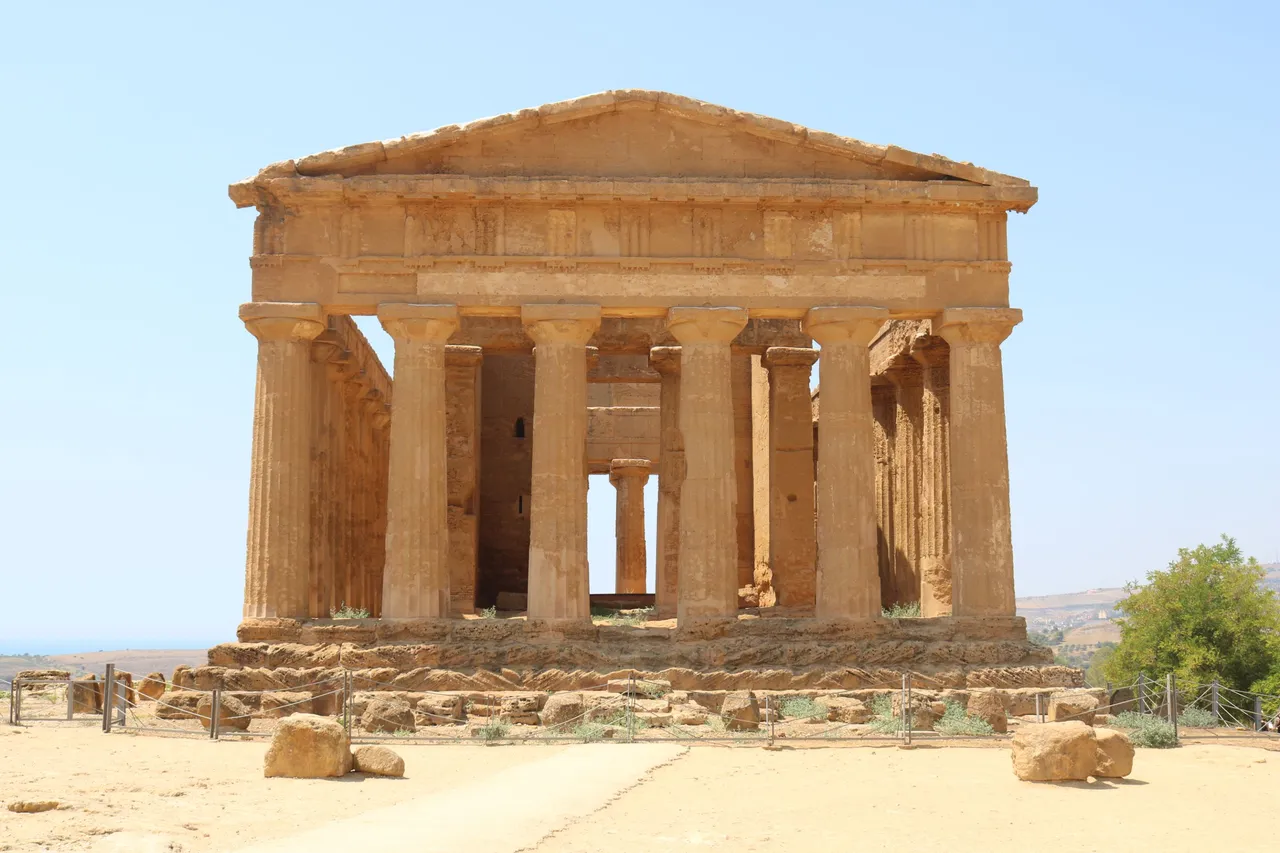
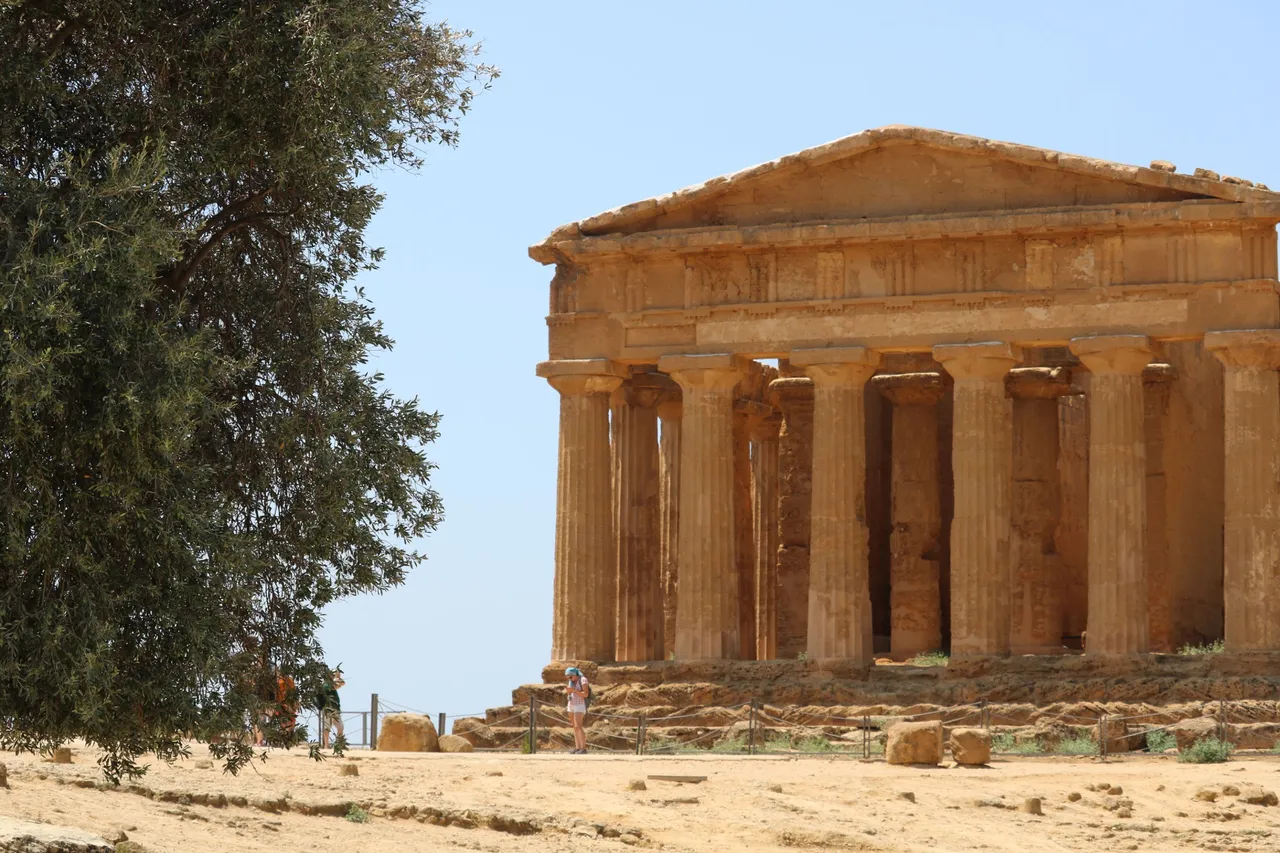
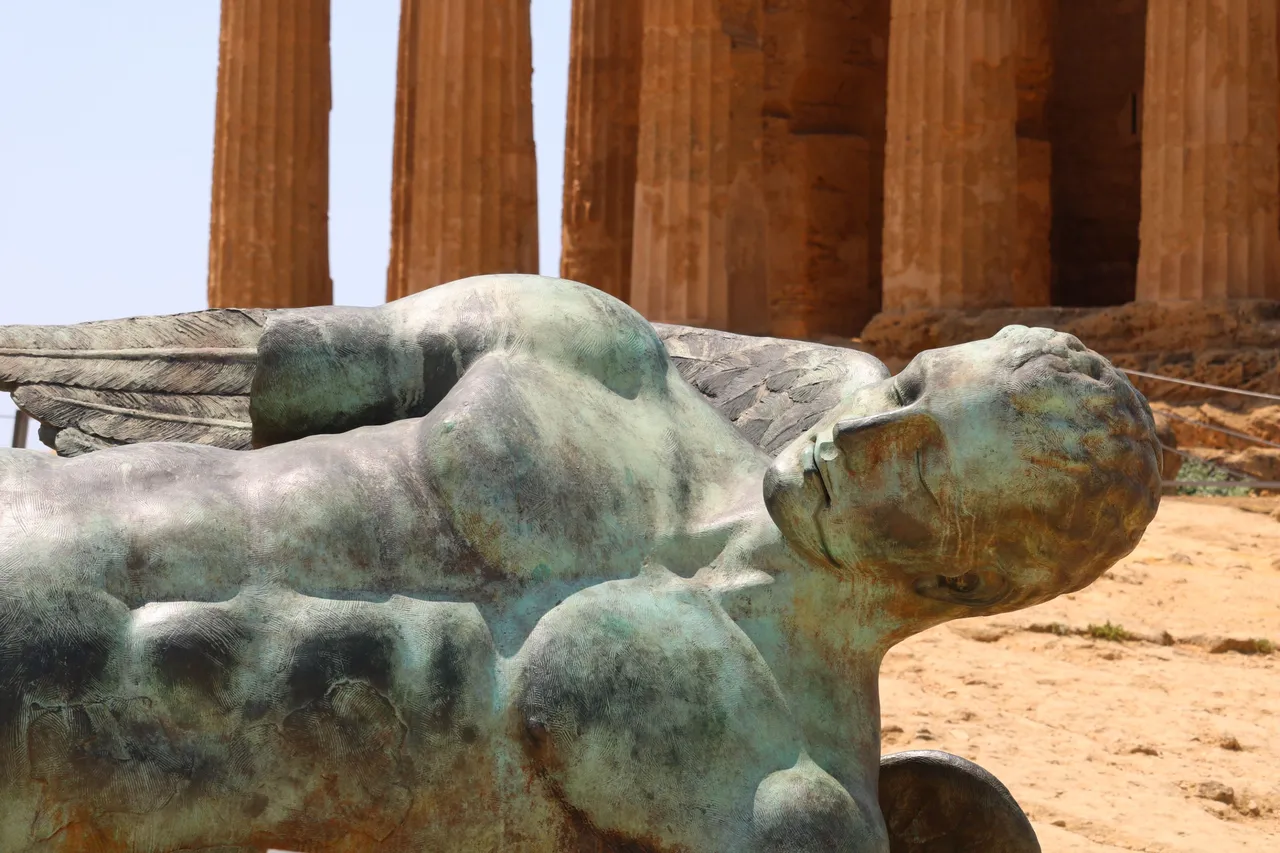

The statue you see in this photograph is called Fallen Icarus.
For those who are not familiar with Greek culture and mythology, Icarus is a character who tragically dies after trying to challenge the Sun beyond his human limits. His father, the inventor Daedalus, makes him a pair of wings made of feathers and wax that allow him to fly. However, when he tries to fly too high, the Sun melts the wax on his wings, causing them to break. As a result, poor Icarus falls into the sea and dies.
Although it looks like an ancient statue, Fallen Icarus was actually created in very recent times by Polish sculptor Igor Mitoraj, who donated it to the park in 2011.
At the time of this trip, in August 2018, the statue was still located in front of the Temple of Concordia, as you see in these pictures. I know that recently they decided to move it away to make the temple the sole protagonist, but I'm not sure if the decision has already been implemented.
Temple of the Dioscuri. The Greek dióskouroi means Castor and Pollux, sons of Zeus. This was probably the most unfortunate temple of Akragas. Only a small part of it survives, having been rebuilt after various devastations, such as fires and earthquakes. However, these four columns have become the symbol of Agrigento, perhaps precisely because of their ability to withstand the passage of time and adversity.
Temple of Heracles. It is believed to be the oldest temple in the Valley.
Note: Heracles is the Greek name, while Hercules is the Roman equivalent.
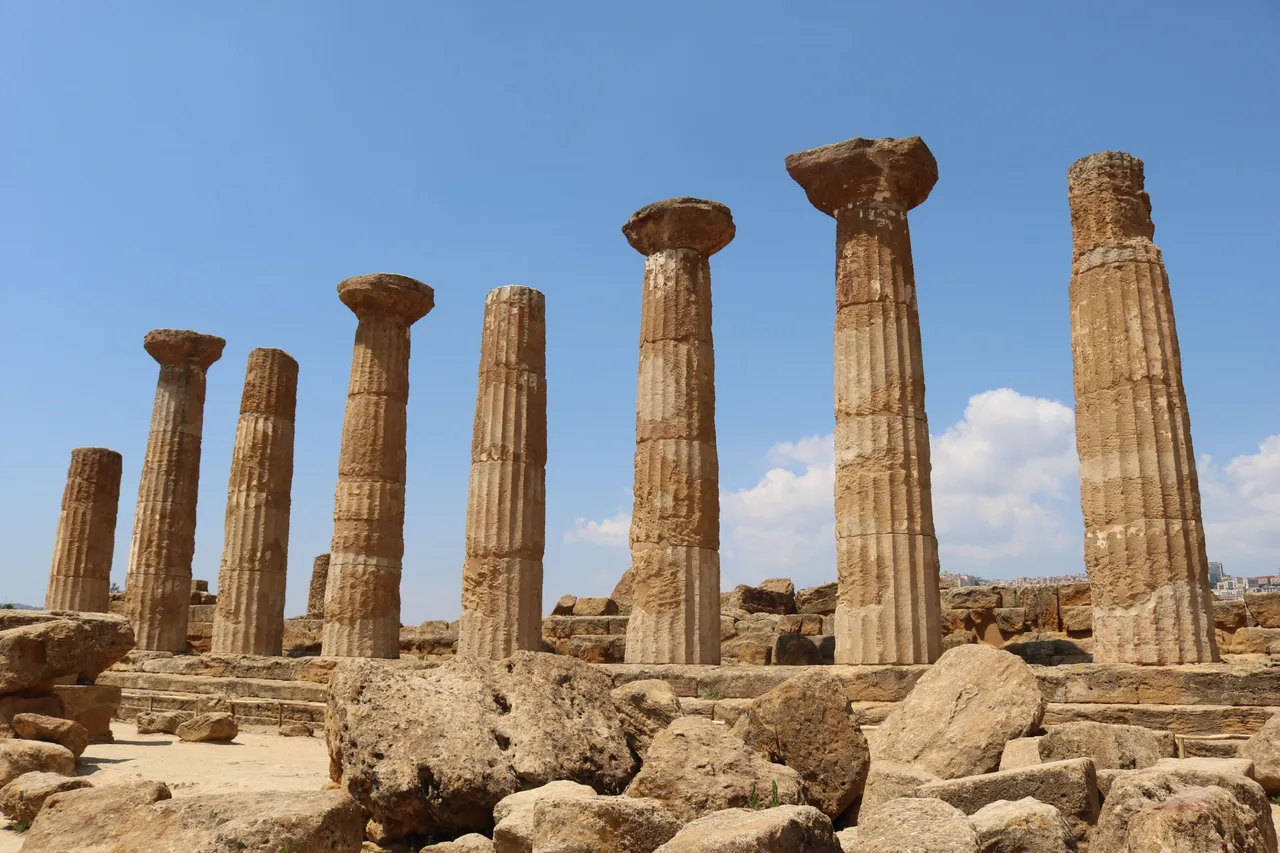
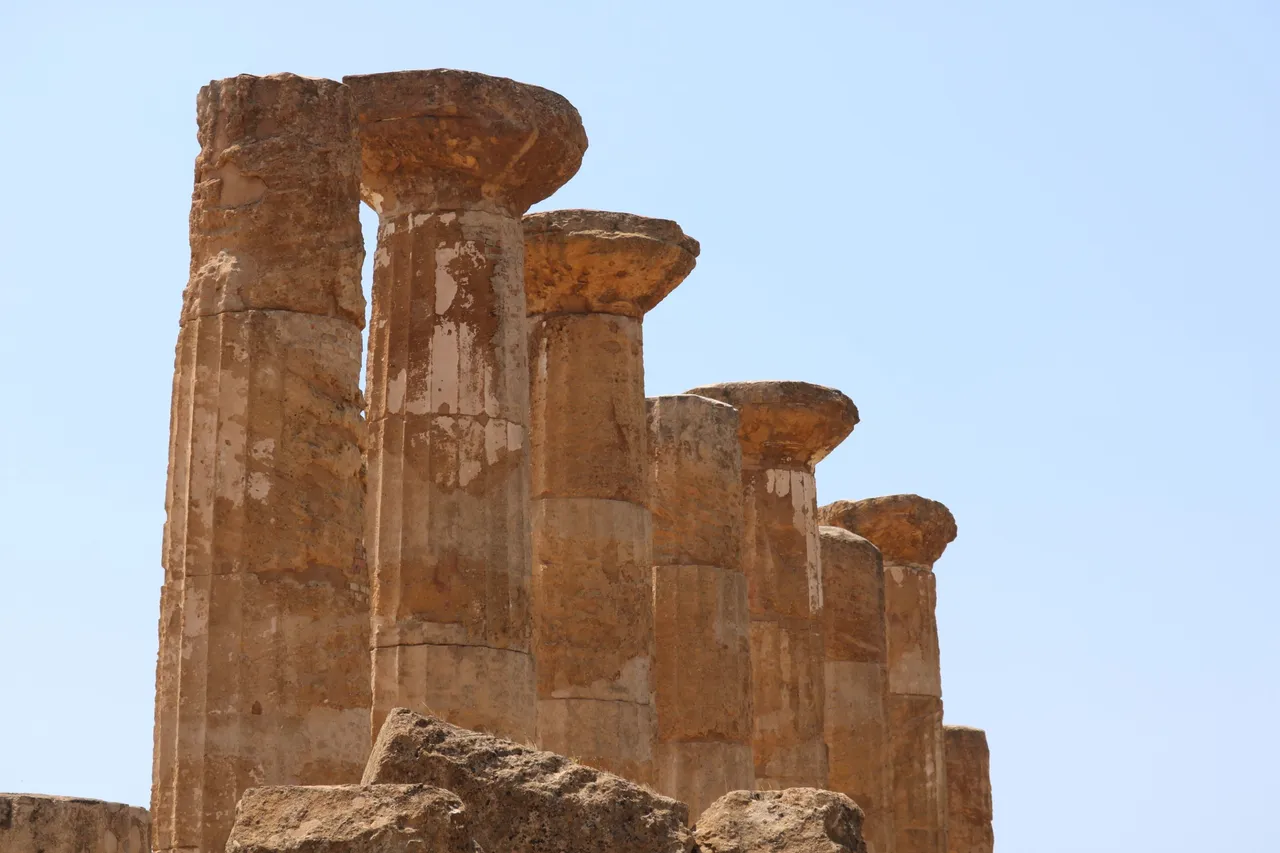
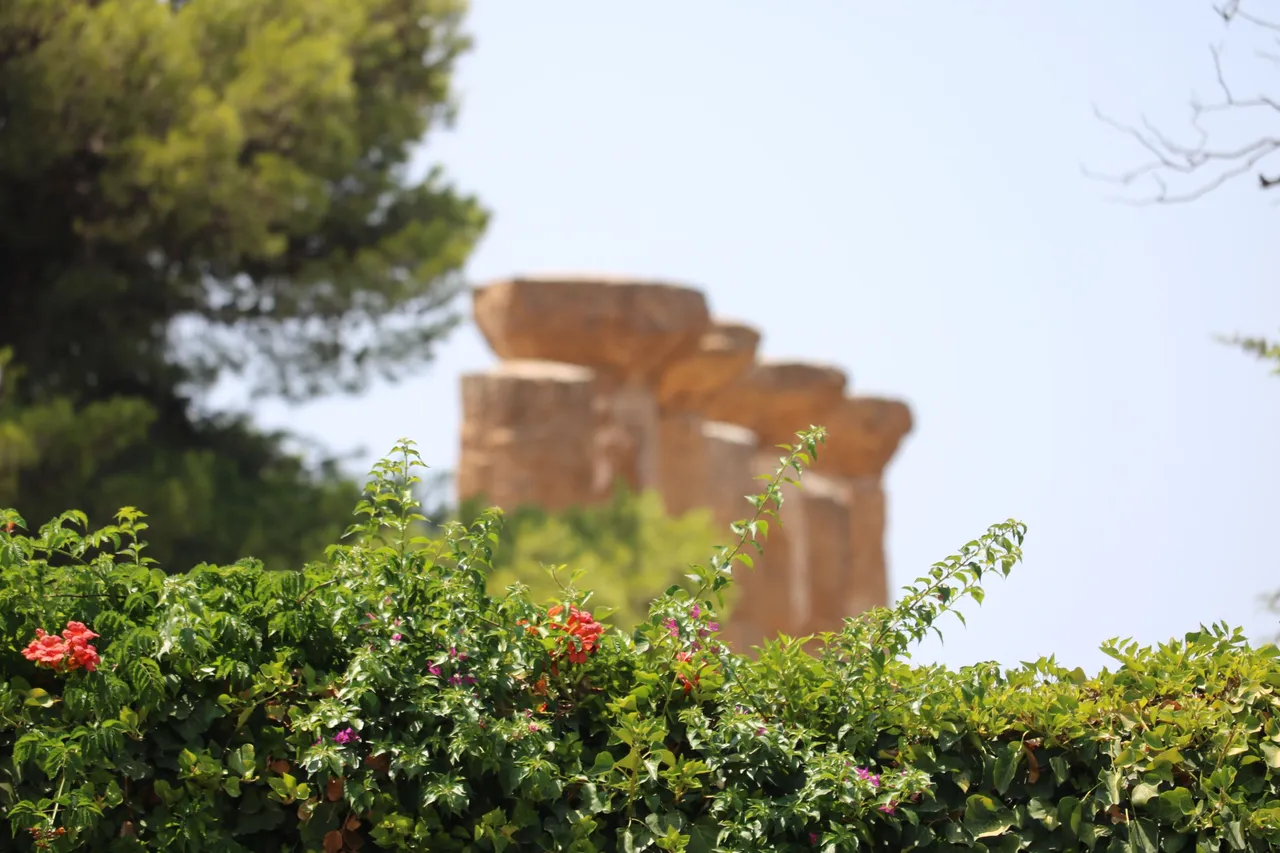
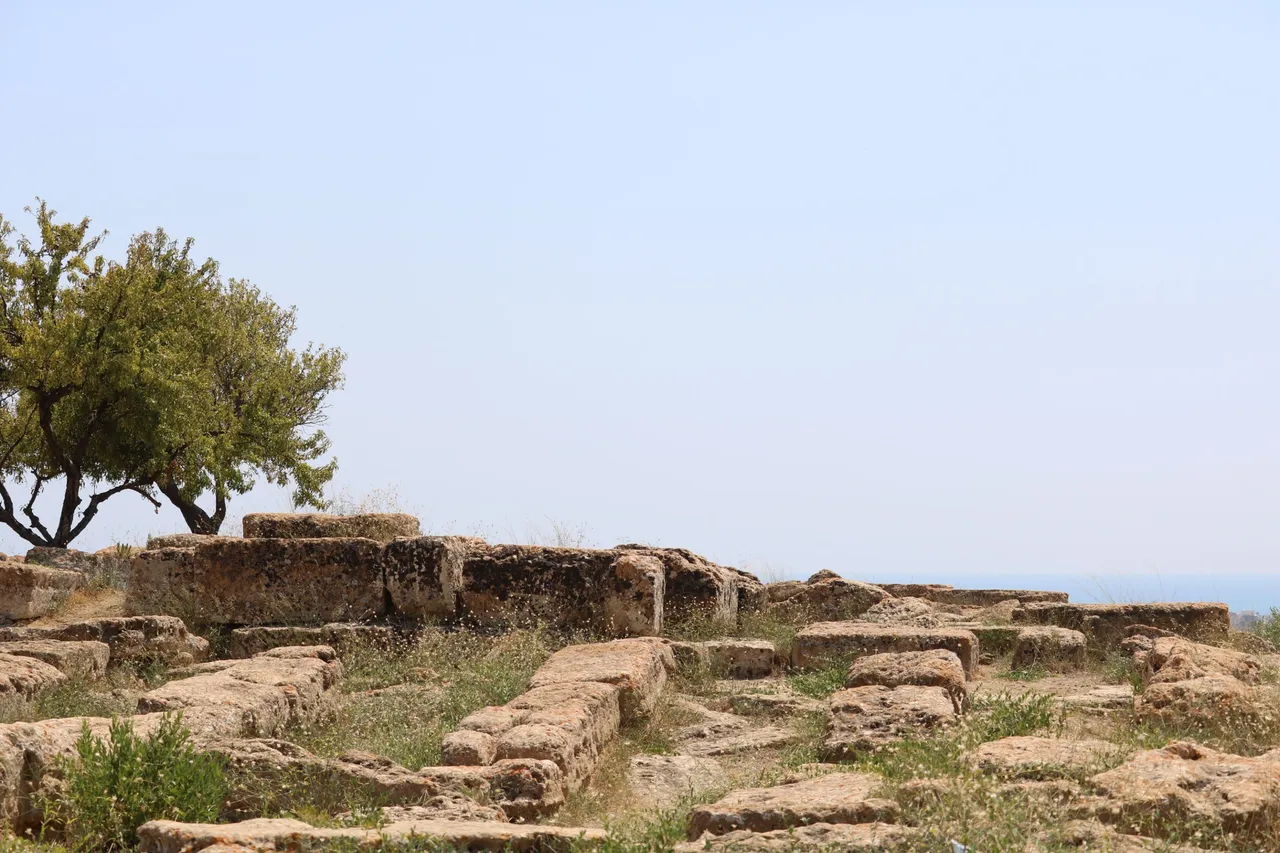
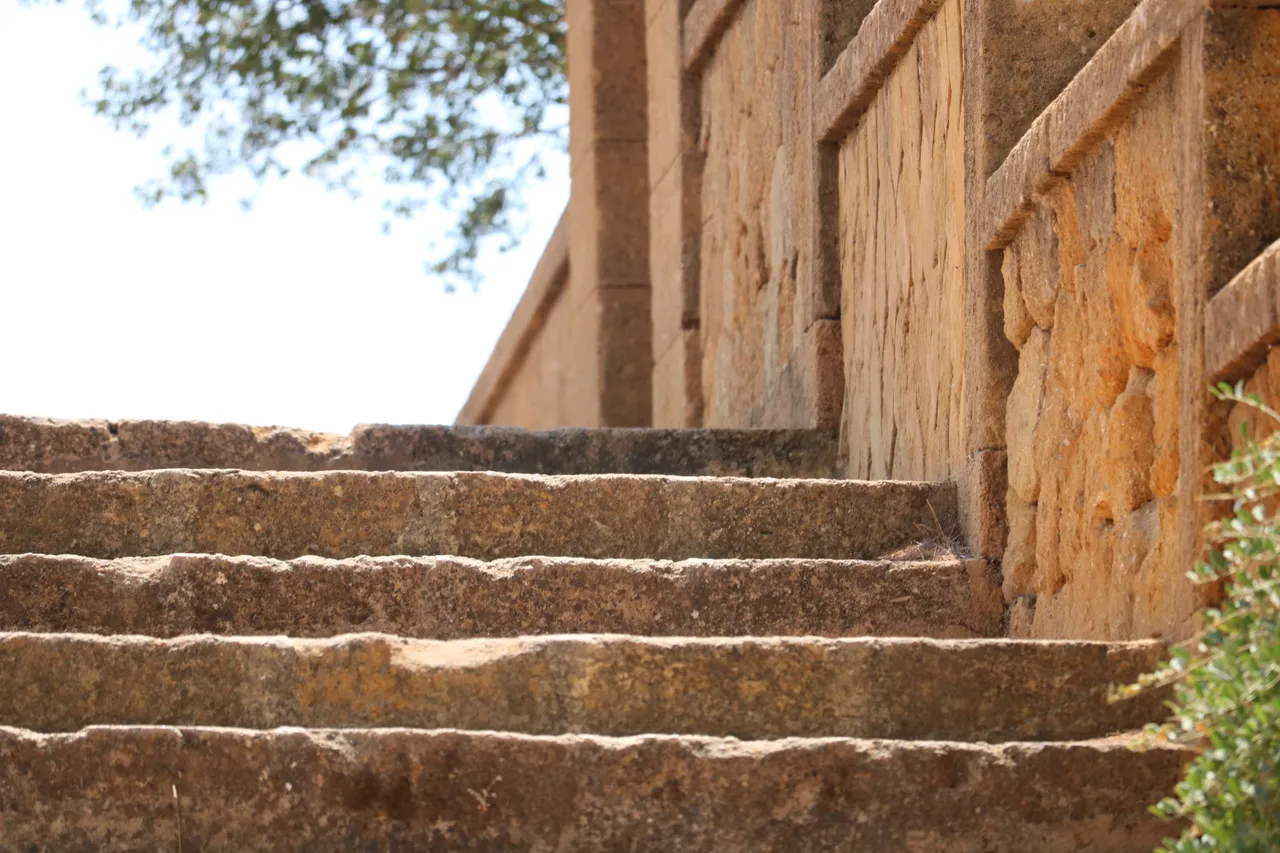
It’s always an incredible emotion for me to see places like this. Beyond stimulating my curiosity and sense of wonder about what has happened in history, about what existed in the world long before we were born, it also helps me to calm down and put my problems into perspective.
What’s the point in worrying about a sore throat, a trivial argument or a problem at work? Honestly, we give these things far too much time and energy. They will fade away tomorrow, disappear with the lightness of things that are unnecessary, so it makes no sense to give them importance.
It’s much better to dedicate our energies to create and preserve Beauty, because, as these temples show, Beauty never ends, not even after three thousand years; it survives time and the fall of civilizations, as long as there’s someone willing to recognize it, and take care of it.
Do you like ancient history?
Feel free to share your experience, or any similar one, or an emotion that my article has stirred in your heart.
For now, as always, thank you for your time, your attention and your support!
See you soon on the road,
Alessandro
[//]:# ([//]:# (!worldmappin 37.29242 lat 13.59369 long d3scr))
